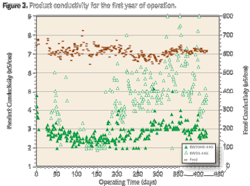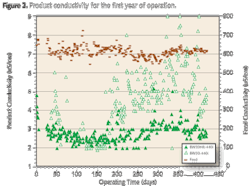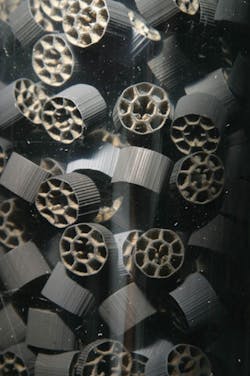MBBR Solution Delivers in Minnesota
Following an evaluation of treatment options, the Moorhead Wastewater Pollution Control Facility experiences several years of success following the installation of a MBBR installation.
The Moorhead Wastewater Pollution Control Facility, located in Minnesota, is one of the oldest installations that uses Moving Bed Biofilm Reactor (MBBR) technology to treat the wastewater generated in the community, managing six million gallons of wastewater per day.
In 2002, the facility completed a comprehensive evaluation of treatment options, including biological wastewater treatment processes and conventional methods.
The engineering team at Headworks Bio (formerly Hydroxyl) developed an innovative design process using attached growth biological treatment, known as MBBR technology.
In the MBBR process, microorganisms grow in biofilms attached to plastic carriers. The carriers move freely, suspended in the liquid of the reactor or basin.
Biofilms growing on Headworks BIOcarriers™ provide a more resilient, dense treatment population per unit volume compared to conventional suspended growth activated sludge systems.
After researching the comparative technologies and completing a five-month pilot program to test the effectiveness of Headworks BIOcarriers, the MBBR design was selected as the most efficient, cost-effective solution for the large municipal wastewater treatment plant.
The full scale wastewater pollution control facility was engineered and designed by worldwide engineering firm CDM, retrofitting an existing aerated pond.
The plant want then commissioned in March of 2003 by Hydroxyl Systems. The BIOcarriers are used for a separate-stage MBBR nitrification system designed to nitrify ammonia. They meet seasonal compliance standards of less than 4 mg/L NH3 for effluent discharge to the Red River.
The separate-stage MBBR nitrification process uses free floating biofilm carriers that provide 402 m2/m3 of internally protected active surface area.
It has provided many advantages to Moorhead Wastewater Pollution Control Facility, including the ability to operate on a single-pass, without the need of a post clarification process typically required in conventional treatment systems, to provide and maintain a MLSS concentration for activated sludge processes. The self regulating MBBR process exhibits controlled sloughing rates and requires minimal operator attention.
It is also capable of providing high rate nitrification even during exceptionally cold water conditions at the Moorhead, MN location and meets the stringent seasonal discharge parameters during the early days of Spring.
The process can also be expanded by simply adding additional BIOcarriers and increasing the air supply to the diffuser system. When asked how the system is running today, Andy Bradshaw, Utilities Engineer for the City of Moorhead, said: "Since commencing operation seven years ago, our MBBR has proven to require very minimal operator attention, effectively nitrifies even during the cold winters in Moorhead, and adapts well to fluctuations in loading."
The advantages associated with installing the MBBR process have continued, even after seven years of operation, truly making this installation a success.
Visit Headworks www.headworksusa.comMore Water & WasteWater International Current Issue Articles
More Water & WasteWater International Archives Issue Articles


